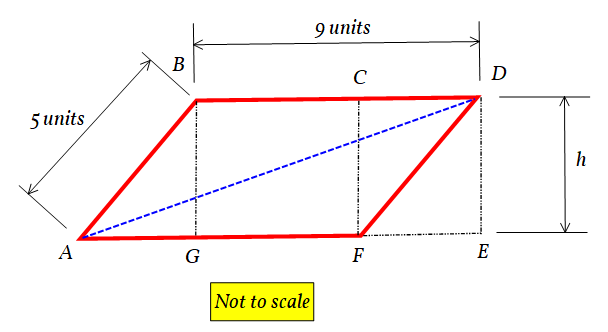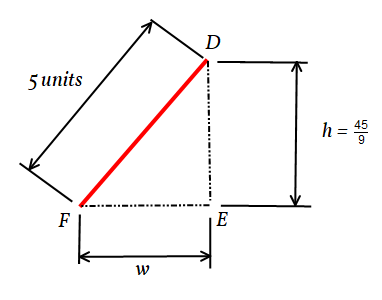A parallelogram has sides with lengths of #5 # and #9 #. If the parallelogram's area is #45 #, what is the length of its longest diagonal?
2 Answers
Diagonal length:
Explanation:
With sides of
and and area of
the parallelogram is actually a rectangle.
The length of the diagonal of a rectangle can be calculated based on the length of its sides, using the Pythagorean Theorem.
In this case:
I am advised that the found condition is mathematically compatible with the shape being a rectangle.
Explanation:
When in doubt do a very quick and rough sketch in the margin. For this question it should take about 5 to 6 seconds
Notice that
~~~~~~~~~~~~~~~~~~~~~~~~~~~~~~~~~~~~~~~~~~~~

Determine the length of DE (h) using area
Determine the length of FE and hence AE
Solve for AD using Pythagoras
~~~~~~~~~~~~~~~~~~~~~~~~~~~~~~~~~~~~~~~~~~~~~~~~
If you were to get a pair of scissors and cut out triangle ABG you will discover that it will fit exactly over the empty space DEF. The result being a rectangle.
The area of the rectangle is:
Divide both sides by
But
~~~~~~~~~~~~~~~~~~~~~~~~~~~~~~~~~~~~~~~~

Now we find out that
~~~~~~~~~~~~~~~~~~~~~~~~~~~~~~~~~~~~~~
Greatest slope length is the diagonal of the rectangle.
Let the slope length be
Both 2 and 56 are prime numbers so we can not simplify any further

